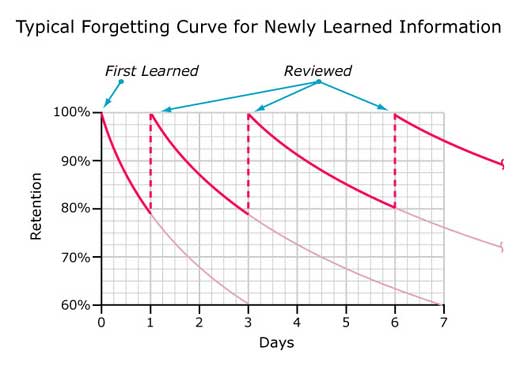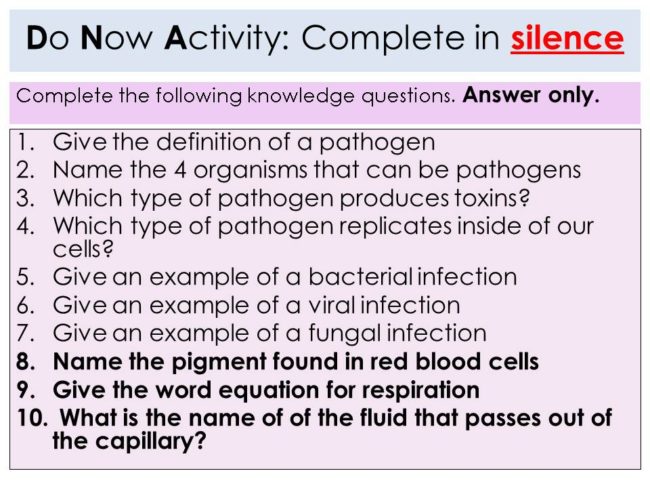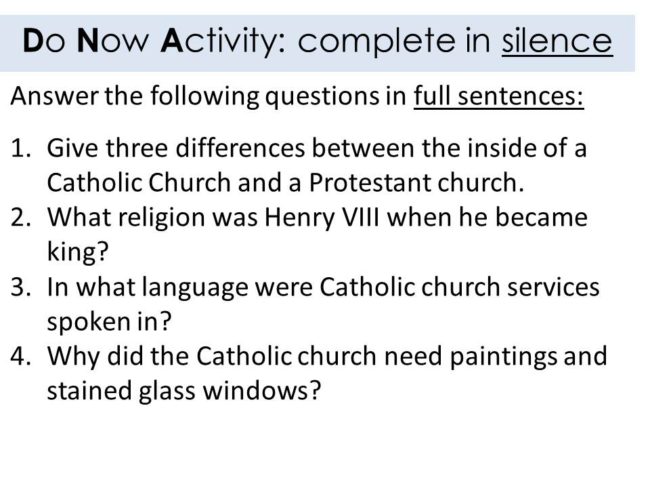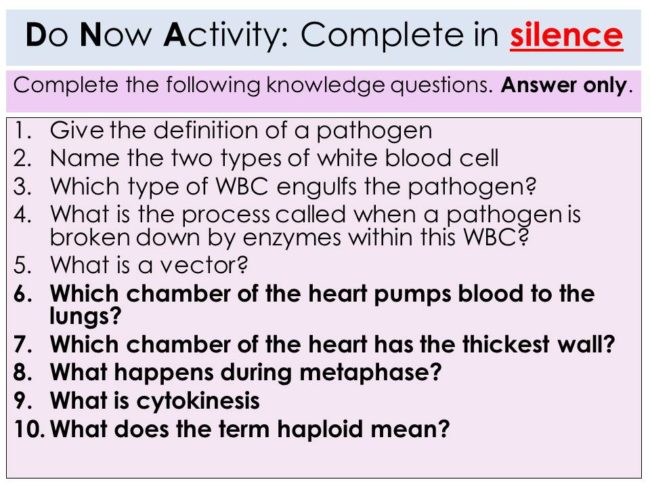10.06.17Using the Do Now for Retrieval Practice–An Update from Alex Laney

Remembering Starts with Forgetting
A year or so ago I wrote a post about Alex Laney’s Do Nows at Smith’s Wood Academy in Birmingham, England. Since then Alex has kept in touch and he recently shared some insights about the school’s new approach to Do Nows or (as they call them) DNAs.
Most notably, given the very compelling research on the importance of regular retrieval practice to ensure that knowledge is stored in long term memory and remains accessible there, teachers at Smith’s Wood have been advised that retrieval practice is the purpose of DNAs.
“The schools policy is now that all DNA’s are intended exclusively to provide a venue for retrieval practice . This is what I feel our students need most,” Alex wrote.
But Alex and his team then went a step further.
Research in the cognitive sciences makes pretty clear that 1) the battle against forgetting begins as soon as you learn something and 2) the best time to practice retrieving something from long-term memory is when you have started to forget it—the fact that you must work harder to retrieve it but then do so successfully causes you to build a stronger neural pathway—memory essentially—of the thing you are trying not to forget.
So Alex and company got a hold of a Forgetting Curve (at top)—which maps the rate at which people forget things they know—and asked teachers to not only use DNAs for retrieval practice and therefore make sure they retained what they’d learned but to try to practice retrieving information on different places on the forgetting curve—that is, essentially with different durations since mastery.
“We have given guidance that approximately 20% of questions on DNAs should be focused on learning that is two weeks or older .” You can see this in the example, below. The bolded questions are from a unit that is older than the un-bolded questions.

“I want to get smarter with this,” Alex Noted. “We will eventually begin to track the content being tested in these recalls to better deal with retrieval and to stem forgetting.” In other words one of the new potential areas for data-driven decision making is studying the success of students in remembering things relative to the placement of retrieval practice on the forgetting curve.
Fascinating stuff. Here are a few more examples of DNA’s from Smith’s Wood:



I think this is great.
A lot of our starters follow the same pattern. We try to use 3 retrieval questions from: Last lesson, last week, last month
Hi Ed, thank you for the comment. We’ll share this terrific tip in our monthly newsletter.
We use a Level 1 in all of our materials that is called Cumulative Review. This can include any and all skills and concepts they have previously learned (math class). Every quiz and test has a Cumulative Review Test part to it. These scores go into a 10% Category for their overall grade. This gives the student accurate data on how much they are retaining what they are learning throughout the year. We also do warms up and exit slips that always contain at least 2 questions from prior units. We do not do any warm ups and exits in silence. My students sit at tables and collaborate while reviewing so as to reinforce the skill and hopefully remember it permanently.